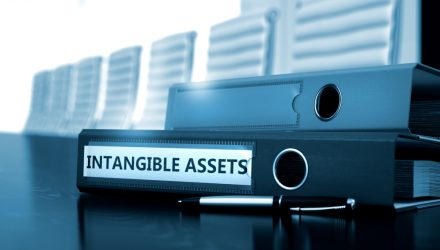The VanEck Vectors Morningstar Wide Moat ETF (CBOE: MOAT), as its name implies, provides basket exposure to wide companies. That’s convenient, but investors should dig into some of the pillars of the wide moat concept, including intangible assets.
The Morningstar Economic Moat Rating methodology assigns an economic moat rating to companies, but in addition, it focuses on companies exhibiting attractive valuations relative to its price. Furthermore, the indexing methodology uses five sources of economic moats, including intangible assets with brand recognition and pricing power, switching costs, strong network effect, cost advantage helps companies undercut competitors on pricing and strong scale
Intangible assets include “patents, brands, regulatory licenses, and other intangible assets can prevent competitors from duplicating a company’s products, or can allow the company to charge a significant price premium,” said VanEck in a recent note.
Understanding Intangibles
Sustainable competitive advantages have helped companies maintain their edge in an ever-changing environment. Investors can also tap into these companies through a targeted ETF strategy focused on companies with wide economic moats.
“Although not always easy to quantify, intangible assets are one of the primary sources of strong competitive advantages for businesses and a key economic moat source,” according to VanEck. “Intangible assets can include corporate intellectual property, such as patents, trademarks, copyrights, government licenses, and business methodologies that help companies generate economic profits.”
The economic moat investment strategy can help investors achieve improved long-term, risk-adjusted return by focusing on quality companies that help limit downside risk while still participating in potential gains.
The Morningstar Economic Moat Rating methodology assigns an economic moat rating to companies, but it also focuses on those that show attractive valuations or are more attractively priced. Beyond factor effects, stock selection is also an important driver as the underlying indices combine both quality and valuation to help investors potentially generate improved returns.
Examples of wide-moat companies with strong intangible assets include MOAT components Starbucks (NASDAQ: SBUX) and pharmaceuticals giant Eli Lilly (NYSE: LLY).
According to VanEck: “is the leading specialty coffee retailer in the U.S. According to Morningstar, Starbucks’ wide economic moat comes from its ‘brand intangible asset that commands premium pricing combined with meaningful scale advantages.’ Morningstar adds, ‘With a widely recognized brand, Starbucks is among the few retail concepts to be successfully replicated across the globe.’
For more on tactical strategies, please visit our Tactical Investing Channel.
The opinions and forecasts expressed herein are solely those of Tom Lydon, and may not actually come to pass. Information on this site should not be used or construed as an offer to sell, a solicitation of an offer to buy, or a recommendation for any product.







